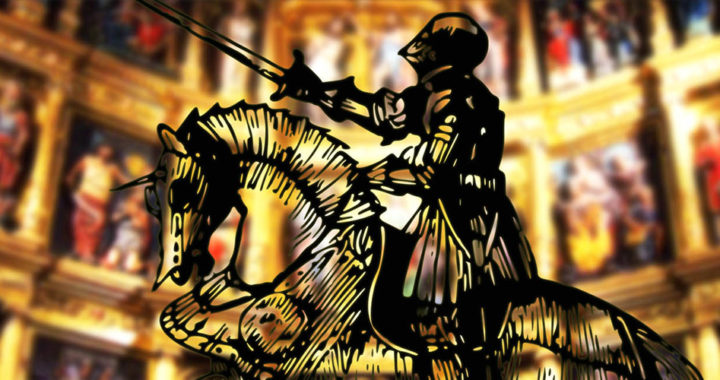The Crusades were a series of military campaigns by the Roman Catholic Church and allied European states beginning in the late 11th century and lasting until the 15th century. Fundamental to the factors and reasons for launching and promoting the Crusades was to reclaim the City of Jerusalem and other holy lands in the Levant from the Muslims and to fend off the growing influence of Islam and other threats.
However, there was more to the aforementioned. To understand the background and origins of the Crusades better, it is essential to take note of the roles played by the Seljuk Turks, the Byzantine Empire under Emperor Alexios I Komnenos, and the Roman Catholic Church under Pope Urban II.
Seljuk Turks from the East: What Was the Original Underlying Cause of the Crusades?
Islam was already widespread across and beyond the Middle East even before the advent of the Crusades. The religion successfully spread outside the Arabian Peninsula because of the weakening powers of the Byzantine Empire and the Sassanid Empire in the region. Years of armed conflict left the two empires exhausted and vulnerable.
Nonetheless, it is worth arguing that the Christians in Europe, as well as in the Near East and the Middle East, had relatively no problem with the Muslims and Islam at the onset of the early Muslim conquests during the 7th and 8th centuries. Remember that the First Crusade began in the late 11th century.
Christians initially tolerated the arrival of the Arabs and the growing influence of Islam. Both coexisted because of shared trade and economic interests. In addition, intermarriages between the two were common. Christian pilgrims were able to visit Jerusalem freely, and Christian merchants and residents lived within Muslim communities just fine.
Beginning in the middle of the 11th century, however, the Seljuk Turks from the Turko-Persian Muslim Seljuk Empire started raiding and occupying the eastern Armenian borders of the Byzantine Empire. They were able to advance further into Asia Minor and successfully overthrew the Byzantine stronghold in Anatolia during the Battle of the Manziker in 1071.
The Seljuk Turks were ruthless. They destroyed Christian churches and sacked holy cities within the Byzantine Empire. Furthermore, they made pilgrimage difficult and dangerous for the Christians. This marked the beginning and origin of the Crusades and the onset of the conflict between the Christians of Europe and the Muslims of the Middle East and Near East.
The Crusaders from the West: Why did Christians in Europe Participate?
During the Council of Piacenza held in 1095, Byzantine Emperor Alexios I Komnenos asked the Roman Catholic Church and the West to extend military support to defend his empire from the Seljuk Turks.
Pope Urban II responded favorably. During the Council of Clermont held in the same year, the pope preached about the importance of sending armed support in the Byzantine Empire. Some historians believed that this assistance would allow Pope Urban II to reunite the Roman Catholic Church and the Eastern Church, as well as the rest of Europe. This possible reunification was a laudable reason for launching the Crusades. It would be reminiscent of the early years of the Roman Empire, and it would be a commendable accomplishment for the pope.
Nonetheless, Pope Urban II signaled the launch of the First Crusade in 1095. The Church presented the Crusades as a pilgrimage intended to liberate Jerusalem and other holy places from the Muslims. The Church was careful not to highlight the armed element of the Crusades by billing it as a religious expedition. After all, Christianity lacked established teachings regarding church-sanctioned wars at that time.
The message of the Church worked. People from different walks of life participated in the First Crusade. Most of them were poor peasants, while some were wealthy lords of estates. Religious motivation was at play behind this apparent volunteerism. Essentially, for these Crusaders, they were protecting Christianity by protecting the Holy Land of Jerusalem. Crusading became a religious calling for participating European Christians nonetheless.
Note that most of the narratives in the Bible took place in Jerusalem and other areas in the Levant. It was also the birthplace of Jesus Christ and Christianity. Thus, since the early Christian era, European believers have regarded the region as their spiritual home.
Summary: Understanding the Background and Origins of the Crusades
The beginning and origins of the Crusades are traceable from the armed conflict between the invading Seljuk Turks and the Byzantine Empire. In other words, the primary and initial reason why the Roman Catholic Church and allied European states launched the Crusades was to defend the holy places that fell under the control of the Seljuk Turks.
Politics also played a factor in promoting the Crusades, particularly the First Crusade. Pope Urban II regarded the dire situation with the Seljuk Turks as an opportunity to rebuild political ties with the Byzantine Empire and Eastern Church. By helping the empire fend off the Muslim invaders, the pope thought that his call to arms could set the stage for the reunification between the East and the West.
Religious motivation was another reason for launching the Crusades. The Church presented crusading as a form of pilgrimage with elements of a military expedition. This was instrumental in mobilizing European Christians who regarded the Crusades as their religious calling.
Note that the Crusades were a series of military campaigns that lasted for five centuries. Although the primary underlying cause of the Crusades was to fend off the Muslim Seljuk Turks, it was not solely an armed expedition against Islam. In fact, one set of Crusades led to an alliance between the Christians and the Muslims. Another one was directed toward some factions within the Roman Catholic Church.
